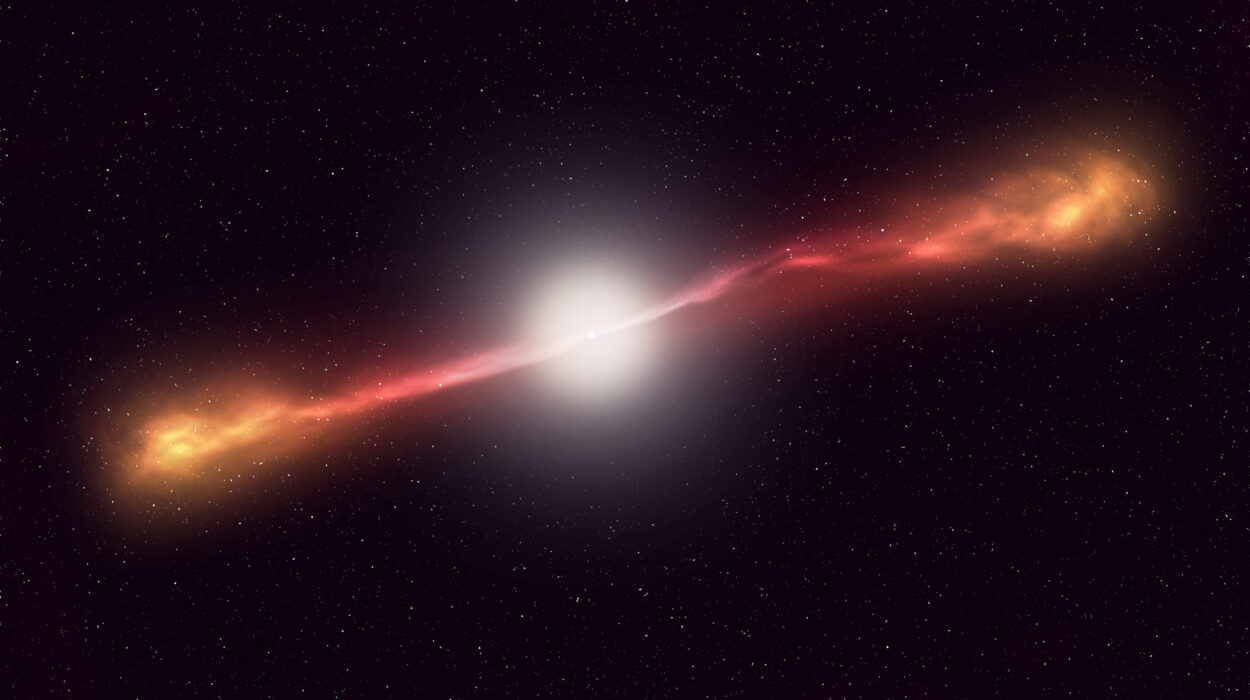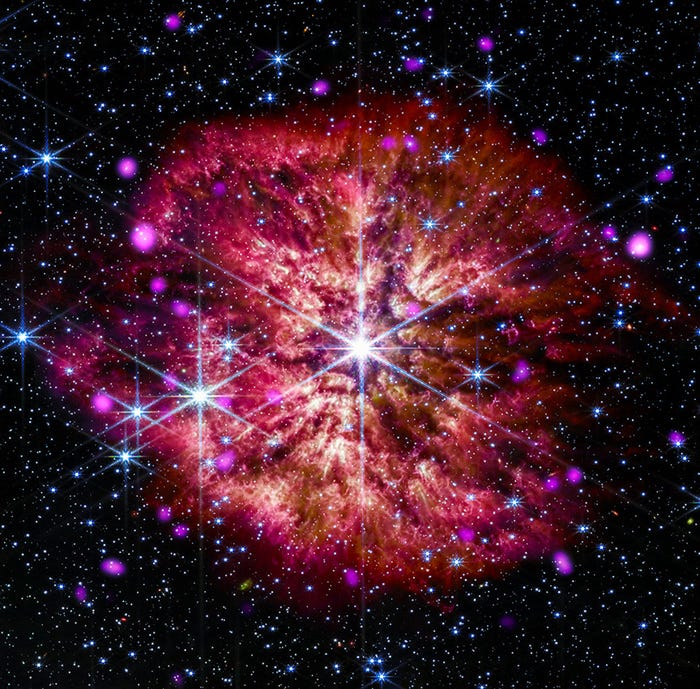For nearly seventy years, a quiet riddle has lingered in the background of cosmic ray research. It sits like a kink in an otherwise smooth curve: a sudden, sharp drop in cosmic ray intensity above 3 PeV that scientists call the “knee.” Generations of researchers have stared at this strange bend in the data, wondering what could possibly carve such a distinctive mark into the high-energy universe. For decades, theories circled the mystery like moths around a lantern. Perhaps it was the limit of how fast cosmic engines could fling charged particles through space. Perhaps it marked a turning point where one population of cosmic rays faded and another began. Perhaps it was all something else entirely.
On November 16, new results released by the Large High Altitude Air Shower Observatory—LHAASO—finally settled the argument. The answer did not lie in exploding stars, nor in some exotic physics hiding in the depths of space. It came from something far more dramatic: black holes, tearing matter from companion stars and launching jets of particles into the galaxy.
Where Black Holes Become Cosmic Engines
The new findings tell a story that begins in some of the Milky Way’s most violent neighborhoods. Tiny but ferocious black hole systems, known as micro-quasars, have long been suspected of behaving like miniature versions of the supermassive quasars that sit at the hearts of distant galaxies. In these systems, a black hole siphons material from a partner star, generating jets so intense they travel at relativistic speeds. Until now, no one knew just how powerful these compact accelerators could be.
LHAASO changed that. Using its world-leading ground-based observatory, the team detected ultra-high-energy gamma rays streaming from five micro-quasars: SS 433, V4641 Sgr, GRS 1915+105, MAXI J1820+070, and the iconic Cygnus X-1. These were not faint signals. They were the unmistakable fingerprints of particle accelerators operating on a scale far beyond anything humanity has ever built.
One system, SS 433, stood out in particular. Its ultra-high-energy radiation overlapped with a massive atomic cloud nearby, a clue that high-energy protons—launched from the black hole’s jet—were slamming into the surrounding material. Those protons carried energies above 1 PeV, and the total power involved was staggering: roughly 10³² joules per second, “equivalent to the energy released per second by four trillion of the most powerful hydrogen bombs.”
Another source, V4641 Sgr, produced gamma rays reaching 0.8 PeV. The parent particles driving them exceeded 10 PeV. With this, the long-suspected idea snapped into focus. Micro-quasars are not just interesting celestial objects; they are “super PeV particle accelerators,” capable of launching matter to energies far beyond what supernova remnants can achieve.
The discovery struck at the heart of an old problem. Supernova remnants had long been considered the Milky Way’s main source of cosmic rays. Yet both theory and observation showed that they simply could not reach energies near the “knee.” Now, the missing producer had a face—and it was a black hole framed by a jet of blazing particles.
A Measurement Once Thought Impossible
While identifying the cosmic engines was key, another challenge loomed just as large: measuring the cosmic rays themselves. To understand the knee, researchers needed to isolate and measure protons—the lightest nuclei—in that rare high-energy range. But the problem was formidable. Cosmic rays around the knee are exceptionally sparse. Satellite instruments cannot gather enough of them. Ground-based detectors, meanwhile, must peer through the interference of Earth’s atmosphere, which scrambles the identities of incoming particles.
“For a long time, this measurement was considered impossible.” That impossibility, however, did not stand for long.
LHAASO developed a multi-parameter technique that allowed it to select a large and high-purity sample of protons, achieving precision comparable to that of satellites. What it found reshaped the cosmic ray story. Instead of a smooth transition from one energy distribution to another, the spectrum revealed “a new ‘high-energy component,’” a surprising structure that demanded an explanation.
The results from AMS-02, DAMPE, and LHAASO began fitting together like a three-piece cosmic puzzle. The low-energy component came from AMS-02. The middle energies came from DAMPE. The new, unexpected high-energy component came from LHAASO. Together they painted a picture of a galaxy filled with many different particle engines, each with its own limits, each contributing its own imprint to the cosmic ray spectrum.
The knee, the data now showed, corresponded to the limit of the sources powering that high-energy component. And those sources were the newly identified micro-quasars, whose acceleration capabilities towered over those of supernova remnants.
A New Link Between Cosmic Rays and Black Holes
With both sets of findings pointing in the same direction, the story that emerged was remarkably cohesive. The detection of ultra-high-energy gamma rays confirmed that micro-quasars can accelerate particles into the PeV range. The measurement of the proton spectrum revealed the existence of a high-energy component that only such extreme systems could produce. These two threads, woven together, finally connected the knee to a specific class of astrophysical objects.
What once seemed like a quiet kink in a graph was now a doorway into the physics of black hole jets. It marked, as the researchers explained, “a significant advancement in resolving the long-standing mystery of the ‘knee’ origin,” while also providing crucial evidence about “the role of black holes in the origin of cosmic rays.”
LHAASO’s hybrid design made this possible, giving researchers a rare opportunity to trace cosmic rays both at their source through gamma rays and near Earth through direct particle measurements. No other observatory had ever connected these two windows on the universe so clearly.
Why This Discovery Matters
This breakthrough is more than a long-awaited explanation. It is a transformation in how scientists understand the high-energy universe. By linking the knee to micro-quasars, the research has drawn a direct line between black hole systems and the cosmic particles that constantly rain down on Earth. It demonstrates that the Milky Way is dotted with powerful particle engines far more extreme than supernova remnants, engines capable of accelerating matter to PeV energies and beyond. It also shows that the cosmic ray spectrum is shaped not by one kind of source but by many, each contributing differently across the vast range of energies.
Most importantly, this discovery opens a new path toward understanding the extreme physics surrounding black holes. These systems are not just gravitational curiosities; they are active architects of the galaxy’s highest-energy radiation. By uncovering their role, LHAASO has illuminated a deeper truth about our universe: that even the most violent objects can become teachers, helping us decode mysteries that have endured for generations.
More information: Science Bulletin (2025). DOI: 10.1016/j.scib.2025.10.048






